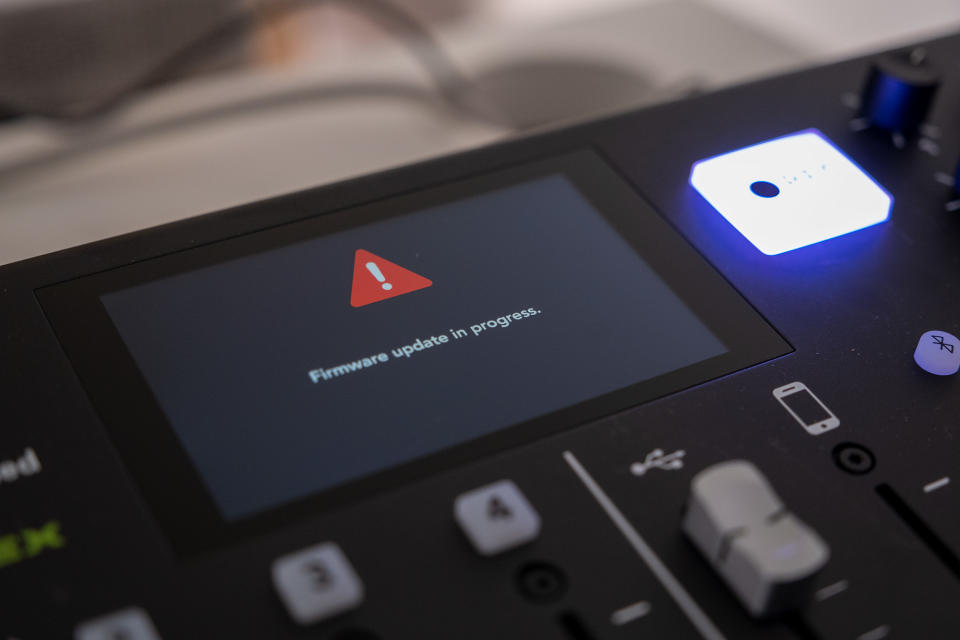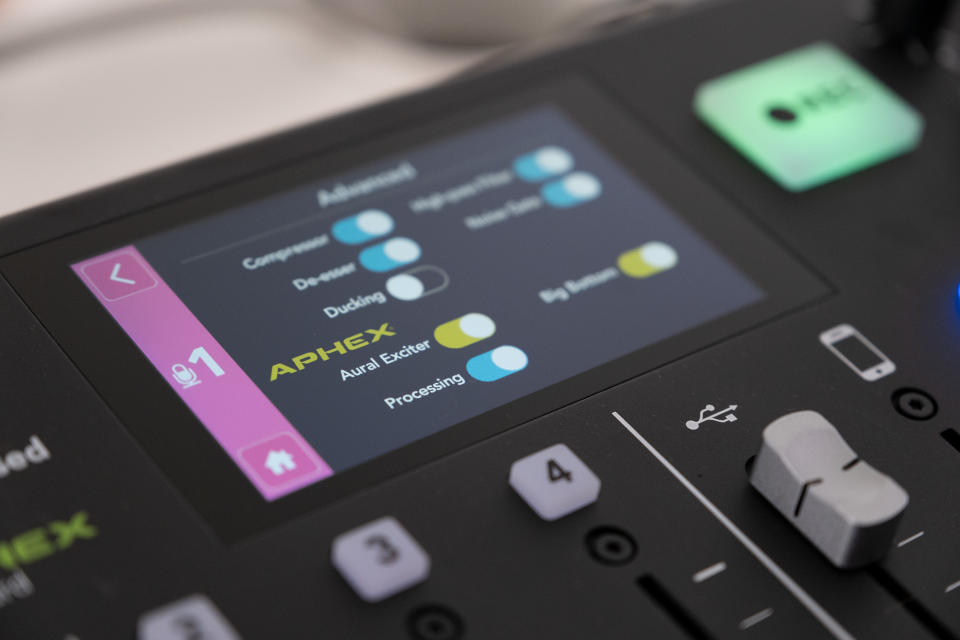Rode's updated Rodecaster Pro proves software is the key to good hardware
The addition of many new features has made the podcasting desk a compelling option.
This week, the Rodecaster Pro became a little more useful. Not uncommon when companies issue firmware updates, but Rode has been consistently improving the podcast mixing desk’s features for the last two years. When Rode released the Rodecaster Pro in 2018, it was a boon to budding podcasters. But at $600, it was a considerable spend for those just starting out. As good as it was at launch, there were some pretty big limitations for even beginners. But this latest update not only adds advanced new features (more details below), it almost makes today’s Rodecaster Pro feel like a sequel to itself.
The first bugbear for early adopters was likely that the Rodecaster Pro only output your recording as one single stereo file. That meant all your hosts/guests/sound effects and so on were baked into one single file. If you wanted to edit and process after the fact, it wasn’t very flexible. Say, if two people were speaking over each other, separating those voices was basically impossible. An update soon after launch enabled multitrack output, which meant producers had individual audio tracks to work with. Likewise, another update made transferring recordings to the desktop simpler (no fiddling with SD cards) along with several usability features.
This most recent update landed this week (version 2.1, finally out of beta) and potentially has a much bigger impact, in my opinion. To the point where it might be worth revisiting the Rodecaster Pro if you had initially dismissed it as too “in the box” for your needs. Most notably, you now have detailed control over the onboard audio effects like noise gate, filters and compression. Previously, you could either enable or disable an effect and, well, that was it. Now you can adjust settings like the threshold and attack of each one to suit your needs.

This is no small thing, either. The Rodecaster Pro’s noise gate, for example, can be pretty aggressive. If you happen to be a little too far from your mic, or somewhere with background noise, you’ll often hear the gate kicking in and out as you speak — often between words if you pause too long. Now you can extend the release time, for example, and avoid that problem. If, like me, you had taken to exporting the audio and adding a gate in some other software (Ableton Live, etc.), you’ll appreciate how much time this could save.
The granular controls are available for all the onboard effects, meaning you’ll have most of the options you’d find in a software audio editor right there on the Rodecaster Pro. This includes the addition of a master bus compressor that should help your podcast sound more cohesive when there are multiple different audio sources.
If you don’t like tweaking things on the Rodecaster Pro’s modest touchscreen, you can now adjust most of the processing settings via the desktop companion app (while the unit is connected). This basically means you can have the host controlling the desk, while someone uses the PC app to dial in compression and so on. Or simply set some presets ahead of time from the comfort of your desktop and have a go-to setting for each recording.
If you had been using the Rodecaster Pro’s multitrack function, there’s good news for you, too. Until now, all the exported tracks were “pre-fader” which basically means any mix levels were effectively ignored. This is generally what you want, as the whole point of exporting is to work with the original audio in more detail with a more capable software. Now, though, you can export “post-fader” meaning that if you’re confident with your mixing on the hardware but still want to touch it up later, you can save some work in post. Caution is required though, because one little fader slip will be baked into your final recording with no way to fix it after the fact. Still, it’s a nice addition.

There are many smaller features that come in the new update. Too many to go through here, but the overall takeaway is that the Rodecaster Pro is now a lot more compelling than when it was initially released over two years ago. I’d go as far as to say that with the latest firmware, side by side with the original, there are enough significant enhancements that Rode could have just waited and released it on slightly revised hardware and called it the Rodecaster Pro 2. I’ve rarely seen so many solid (and free) updates to existing hardware.
Interestingly, it’s not just software updates that have improved the experience. Very recently, Rode also revealed some hardware accessories, most notably an adaptor so you can run the console via a battery pack, boosting its portability credentials significantly.
All this to say, that if the Rodecaster Pro’s $600 price tag was a little rich for your needs, it might well be worth revisiting it. You can still pick up the Zoom LiveTrack for about $200 less, and that’s still an appealing option to those more accustomed to a traditional mixing desk. You might also be more comfortable recording straight into your PC. But the Rodecaster Pro’s ease of use and continued support with new features is a pleasing combination for sure.

